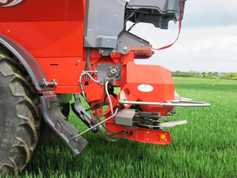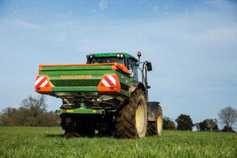REPS was a big hit with dairy farmers, with almost half subscribing to the schemes between 1994 and 2011. The REPS payments were a welcome part of dairy farm incomes, particularly on small and medium-sized farms. GLAS is a direct descendant of REPS, but the level of dairy farmer participation in the scheme is yet to be seen.
The barriers to entry for GLAS are higher than they were for REPS, while the financial rewards of participation are less. The maximum payment under GLAS is €5,000 per applicant per year. Entry to the scheme is based on a set of ‘‘tiers’’, which prioritise entry to the scheme for those with environmental assets on their farm, such as wildlife habitats or vulnerable water areas.
The proportion of dairy farmers qualifying under the first two tiers will be low. However, farmers can apply to the scheme under a third tier, which sets out specific actions that can be undertaken to enhance water quality and biodiversity while reducing the risks of climate change. Entry to the scheme under Tier 3 is not guaranteed and it depends on take up of Tier 1 and Tier 2, but it is expected that the majority of applicants to the scheme will be from Tier 3.
Of the 20 actions that farmers can pick from, some will be more attractive to dairy farmers than others. Installing bat and bird boxes is easy and they are relatively inexpensive to buy but the annual payment for these is low at €13 and €6, respectively, and the maximum number of boxes that farmers can claim is 15.
The best advice for dairy farmers thinking of joining the scheme is to pick a number of options that suit your farming system and maximise payments that way. The traditional hay meadow option may seem attractive, with a payment rate of €315/ha per year and given that many dairy farmers feed hay to dry cattle and young calves.
However, the specifications involved in undertaking this action are not nearly as attractive – the designated land parcel must have at least three grass species present (other than perennial ryegrass) and, if perennial ryegrass is present, it cannot make up more than 50% of the grass species.
Furthermore, only 40kg/ha of chemical nitrogen fertilizer can be applied in a calendar year and the plot cannot be grazed from 15 April until the hay is cut after 1 July. While this seems overly onerous and against the principles of producing good quality hay, it could be an option for some dairy farmers with outside blocks that are not as intensively farmed or for use on part of a land parcel.
Another potentially attractive options for some farmers, particularly farmers with a number of watercourses on their farm is the protection of watercourses from bovines action. This action requires watercourses to be fenced off from livestock and payment is €1.50/m per year and there is no limit on the amount of fencing that can be claimed, up to the maximum of €5,000. However, animals cannot have access to the watercourse for drinking water and the fences must be 1.5m away from the top of the bank.
Relative to the old REPS, it is clear that GLAS is substantially less rewarding. The big question on most dairy farmers minds will be whether or not it is a worthwhile scheme to join. Most of the big money options, such as conservation of birds including the corncrake, partridge and hen harrier are not applicable to most dairy farmers. Other options, such as laying hedges, planting trees and hedgerows, installing bird boxes and repairing stone walls, along with others, are not very attractive to most dairy farmers. This is because there are limitations on the amount that can be claimed and the relatively low payment rate per option doesn’t make it worthwhile, unless the farmer was planning to carry out these actions in any event.






 This is a subscriber-only article
This is a subscriber-only article










SHARING OPTIONS: